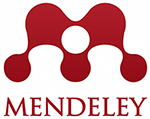Food safety and health risk: the problem of agrochemical handling and use by small farmers of central coast in Peru
DOI:
https://doi.org/10.26871/killkana_tecnica.v3i2.572Abstract
The present research addressed the problem of pesticide management and deficient use by applying a questionnaire to a sample of small farmers on the central coast of Peru, this problem is repetitive and worrisome in different Latin American countries that do not have adequate regulation of its agricultural production for domestic market. The results indicated the use of unauthorized pesticides, due to the lack of recommended registered products, as well as non-compliance in the recommended dose. Additionally, the rotation of active ingredients per mode of action is limited and the terms of lack are not respected, aggravating in the case of products destined for the national market. Likewise, the recommendations of the re-entry periods and the use of personal protective equipment are not complied with.
Downloads
References
Akoto, O., Oppong-Otoo, J., & Osei-Fosu, P. (2015). Carcinogenic and non-carcinogenic risk of organochlorine pesticide residues in processed cereal-based complementary foods for infants and young children in Ghana. Chemosphere , 132, 193-199.
Caldas, E. D. (2011). Pesticide Poisoning in Brazil. Encyclopedia of Environmental Health , 4, 419-427.
Cisneros, F. (2012). Control Químico de las Plagas Agrícolas. Lima: Sociedad Entomológica del Perú.
Collantes, R., & Rodríguez, A. (2015). Sustentabilidad de agroecosistemas de palto (Persea americana Mill.) y mandarina (Citrus spp.) en Cañete, Lima-Perú. Tecnología y Desarrollo , 13 (1), 27-34.
Díaz de Rada Iguzquiza, V. (2002). Tipos de encuestas y diseños de investigación. (U. P. Navarra, Ed.) España.
Escobar Castillejos, D., Caballero Roque, A., & Rendón Von Osten, J. (2011). Prácticas de Utilización para Plaguicidas en la Localidad Nueva Libertad, La Concordia, Chiapas. Revista Mexicana de Ciencias Agrícolas (1), 19-30.
FAO. (2014). Código Internacional de Conducta para la Gestión de Plaguicidas. Roma: FAO Y OMS.
Gonzales, L., & Díaz, S. (1994). Nysius sp. (Hemiptera-Lygaeidae) en fresa cultivada en el valle huaral (Lima). Revista Peruana de Entomología , 19-21.
IICA. (2016). Guía de Formación en Buenas Prácticas Agrícolas en Hortalizas. Buenos Aires: Instituto Interamericano de Cooperación para la Agricultura.
INCAGRO Proyecto de Investigación y Extensión Agrícola. (2006). Estudios de Líneas de Base y de Salida de Proyectos Cofinanciados. Lima: Ministerio de Agricultura del Perú.
Kvale, S. (2011). Las entrevistas en Investigación Cualitativa. (T. del Amo Martín, & C. Blanco Castellano, Trads.) Ediciones Morata.
Montoro, Y., Moreno, R., Gomero, L., & Reyes, M. (2009). Características de uso de plaguicidas químicos y riesgos para la salud en agricultores de la sierra central del Perú. Revista Peruana de Medicina Experimental y Salud Pública , 466-472.
Müller, K., Tiktak, A., Dijkman, T. J., Green, S., & Clothier, B. (2014). Advances in Pesticide Risk Reduction. Encyclopedia of Agriculture and Food Systems , 17-34.
Ngowi, A., Mbise, T. J., Ijani, A. S., London, L., & Ajayi, O. C. (2007). Smallholder vegetable farmers in Northern Tanzania: Pesticides use practices, perceptions, cost and health effects. Crop Protection , 26, 1617–1624.
Panuwet, P., Prapamontol, T., Chantara, S., Thavornyuthikarn, P., Montesano, A., Whitehead Jr., R., y otros. (2008). Concentrations of urinary pesticide metabolites in small-scale farmers in Chiang Mai Province, Thailand. Science of The Total Environment , 407, 655–668.
Papadakis, E. N., Vryzas, Z., Kotopoulou, A., Kintzikoglou, K., Makris, K. C., & Papadopoulou-Mourkidou, E. (2015). A pesticide monitoring survey in rivers and lakes of northern Greece and its human and ecotoxicological risk assessment. Ecotoxicology and Environmental Safety , 116, 1-9.
Pérez, M. A., Navarro, H., & Miranda, E. (2013). Residuos de Plaguicidas en Hortalizas: Problemática y Riesgo en México. Revista Internacional de Contaminación Ambiental , 45-64.
Qin, G., Li, Y., Chen, Y., Sun, Q., Zuo, B., He, F., y otros. (2015). Pesticide residues determination in China vegetables in 2010–2013 applying gas chromatography with mass spectrometry. Food Research International , 72, 161-167.
Quiroga Martínez, R., & Hauwermeiren, S. (1996). Chile,globalización e insustentabilidad: Una mirada desde la economía ecológica. Santiago, Chile: Instituto de Ecología Política, Programa de Economía Ecológica.
Salkind, N. J. (1999). Métodos de Investigación. (R. L. Escalona, Trad.) Pearson Educación.
Silva, E., Daam, M. A., & Cerejeira, M. J. (2015). Predicting the aquatic risk of realistic pesticide mixtures to species assemblages in Portuguese river basins. Journal of Environmental Sciences , 31, 12-20.
Skretteberg, L. G., Lyrån, B., Holen, B., Jansson, A., Fohgelberg, P., Siivinen, K., y otros. (2015). Pesticide residues in food of plant origin from Southeast Asia – A Nordic project. Food Control , 51, 225-235.
Universidad de California, Davis. (2005). Guía para el manejo de las plagas: Fresas.
Varés Megino, L. (2006). Resistencia de los patógenos a los fungicidas. Agricultura: Revista agropecuaria , 340-342.
Verbeke, W., Van Loo, E. J., Vanhonacker, F., Delcour, I., Spanoghe, P., & van Klaveren, J. D. (2015). Stakeholder attitudes towards cumulative and aggregate exposure assessment of pesticides. Food and Chemical Toxicology , 79, 70-79.
Williamson, S., Ball, A., & Pretty, J. (2008). Trends in pesticide use and drivers for safer pest management in four African countries. Crop Protection , 27, 1327-1334.
Xavier, N. M., Gastal, A., Dalke , R., Spada, N., & Iribarrem, V. (2014). Occupational exposure to pesticides, nicotine and minor psychiatric disorders among tobacco farmers in southern Brazil. NeuroToxicology , 45, 347–354.
Yadav, I. C., Devi, N. L., Syed, J. H., Cheng, Z., Li, J., Zhang, G., y otros. (2015). Current status of persistent organic pesticides residues in air, water, and soil, and their possible effect on neighboring countries: A comprehensive review of India. Science of The Total Environment , 511, 123-137.
Yengle, M., Palhua, R., Lescano, P., Villanueva, E., Chachi, E., Yana, E., y otros. (2008). Prácticas de Utilización de Plaguicidas en Agricultores en el Distrito de Huaral-Perú. Revista Peruana de Epidemiología , 12 (1), 1-6.










